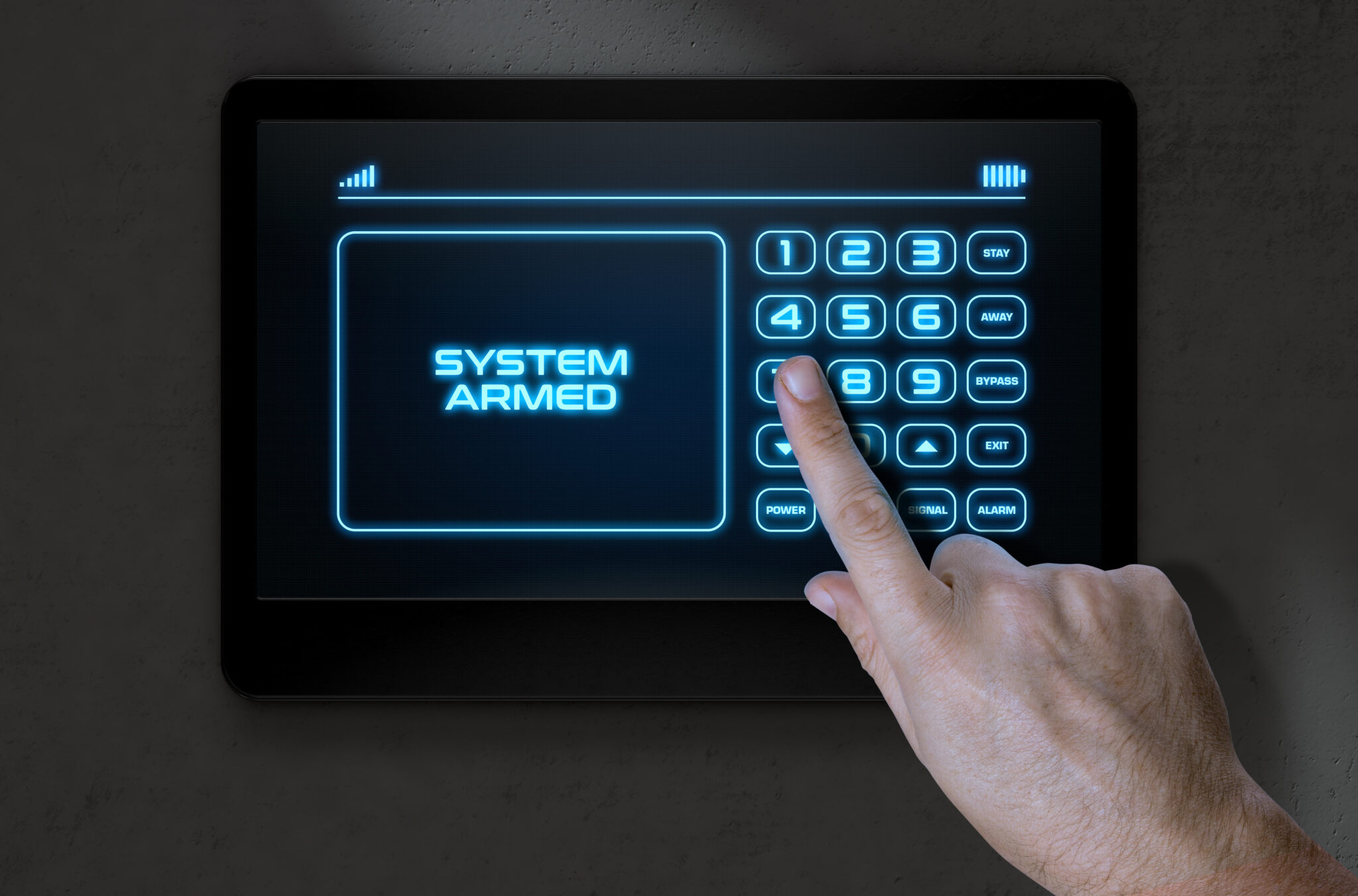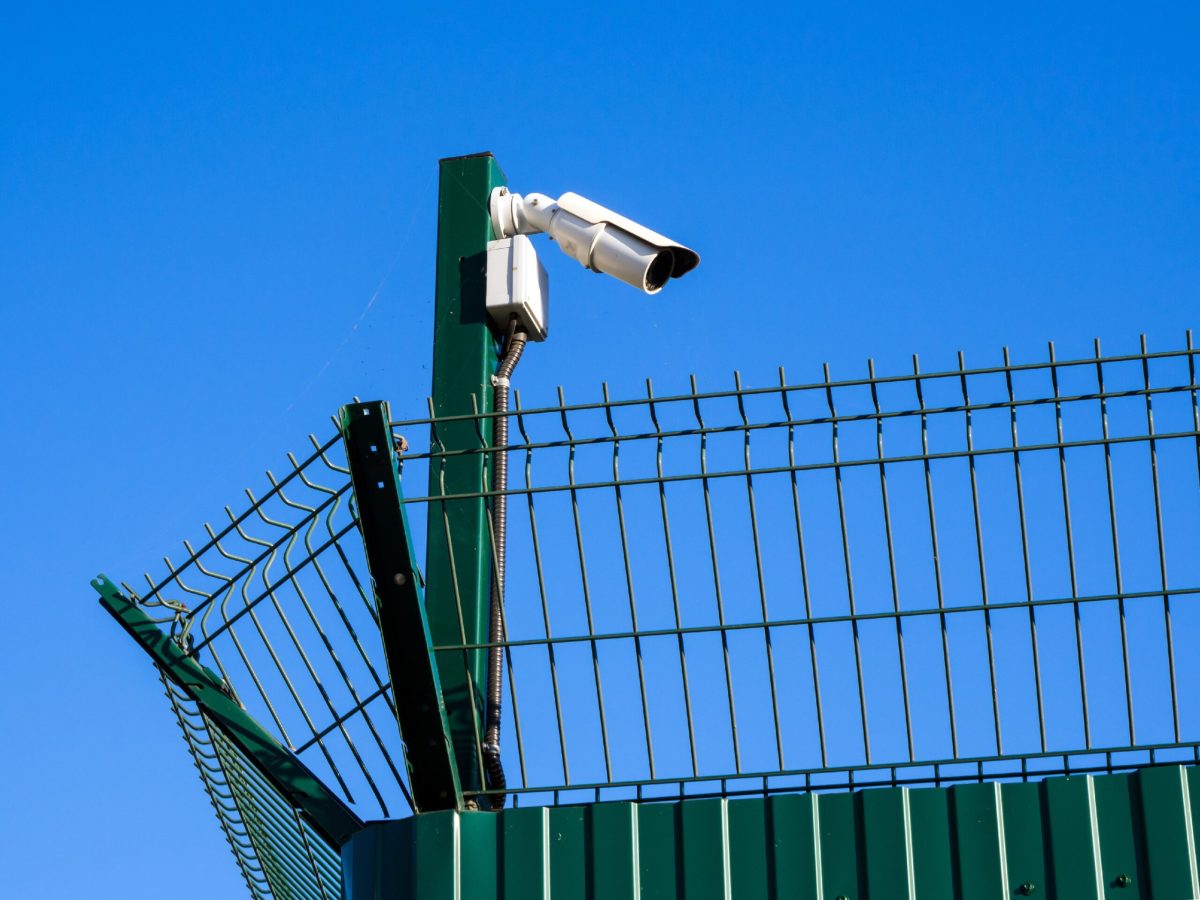Home>Home Security and Surveillance>How Do Intrusion Detection Systems Differ From Firewalls


Home Security and Surveillance
How Do Intrusion Detection Systems Differ From Firewalls
Modified: March 6, 2024
Learn how intrusion detection systems and firewalls differ in their role in home security and surveillance. Find out which one is best for your needs.
(Many of the links in this article redirect to a specific reviewed product. Your purchase of these products through affiliate links helps to generate commission for Storables.com, at no extra cost. Learn more)
Introduction
Welcome to the world of home security and surveillance! In today’s fast-paced and interconnected world, ensuring the safety of our homes and loved ones has become a top priority for many. With advancements in technology, home security systems have evolved to offer a wide range of options to protect against potential threats.
Two important components of any comprehensive home security system are firewalls and intrusion detection systems (IDS). While they may sound similar, these two systems serve different purposes and have distinct functionalities. In this article, we will delve into the world of firewalls and IDS, exploring their functions and highlighting the key differences between them.
Firewalls act as the first line of defense in protecting the network infrastructure of homes. They establish a barrier between the internal network and external threats, such as hackers and malware. Imagine a firewall as a security guard stationed at the entrance of a building, carefully monitoring who can enter and exit.
On the other hand, intrusion detection systems (IDS) are designed to identify and alert homeowners to potential intrusions or suspicious activities within the network. IDS acts as the vigilant watchdog, constantly monitoring the network for any signs of malicious or unauthorized behavior.
Understanding the differences between firewalls and IDS is crucial in determining the right home security solutions for your specific needs. Let’s take a closer look at the key distinctions between these two essential components of home security systems.
Key Takeaways:
- Firewalls act like security guards for your home network, controlling who can enter and exit. They prevent unauthorized access and filter traffic based on rules, providing a first line of defense.
- Intrusion Detection Systems (IDS) are like vigilant watchdogs, constantly monitoring your network for potential threats. They detect and alert you to suspicious activities, helping you stay one step ahead of potential intrusions.
Function of Firewalls
Firewalls play a crucial role in home security by acting as a protective barrier between the internal network and the outside world. Their primary function is to filter and control the incoming and outgoing traffic based on predefined rules.
Firewalls use a set of rules to determine what network traffic is allowed and what is blocked. These rules can be based on various factors, such as the source or destination IP address, port numbers, protocol types, or even specific keywords. By analyzing the packets of data passing through the network, firewalls can make informed decisions about whether to allow or deny access.
One of the primary purposes of a firewall is to prevent unauthorized access to the network. It achieves this by blocking incoming connections that do not meet the specified criteria, effectively creating a barrier that keeps potential threats at bay. Additionally, firewalls can also mask the IP address of devices within the network, making them less visible to potential attackers.
Another important function of firewalls is to monitor outgoing traffic. This is especially useful in preventing the spreading of malware or the exfiltration of sensitive data. By analyzing the outgoing packets, firewalls can detect and block any suspicious or unauthorized activity, providing an additional layer of protection.
Furthermore, firewalls can also provide network address translation (NAT) capabilities. NAT allows multiple devices within a network to share a single public IP address. This helps in conserving IP addresses and adds an extra level of anonymity and security to the connected devices.
In summary, firewalls act as the gatekeepers of a network, monitoring and controlling the flow of traffic. They protect against unauthorized access, filter incoming and outgoing data packets based on predefined rules, and provide network address translation capabilities. With a well-configured firewall in place, homeowners can have peace of mind knowing that their network is protected from potential threats.
Function of Intrusion Detection Systems (IDS)
Intrusion Detection Systems (IDS) play a crucial role in enhancing the security of home networks. Unlike firewalls, which focus on preventing unauthorized access, IDS are designed to detect and alert homeowners to potential intrusions or suspicious activities within the network.
The primary function of IDS is to monitor network traffic and analyze it for any signs of malicious or unauthorized behavior. IDS accomplish this by examining the content and patterns within data packets passing through the network. They compare this information against a database of known attack signatures or behavioral patterns to identify potential threats.
There are two main types of IDS: network-based IDS and host-based IDS. Network-based IDS monitor network traffic in real-time, capturing and analyzing packets to detect any abnormal or suspicious activities. Host-based IDS, on the other hand, monitor the activities of individual devices within the network, looking for signs of compromise or malicious behavior.
IDS systems utilize a range of techniques to identify potential threats. These techniques include signature-based detection, which compares network traffic against a database of known attack patterns, and anomaly-based detection, which looks for deviations from normal network behavior. IDS can also employ heuristic analysis, which involves identifying new or unknown threats based on behavioral patterns.
Once an IDS detects a potential intrusion or suspicious activity, it triggers an alert. This alert can be in the form of an email, text message, or notification on a centralized management console. The homeowner can then take appropriate action to investigate and mitigate the potential threat.
IDS also play a vital role in incident response. They provide valuable information about the nature of the intrusion, including the source IP address, the affected system, and the type of attack. This information can assist in identifying the vulnerabilities in the network, strengthening the overall security posture, and preventing future attacks.
Overall, the main function of IDS is to monitor network traffic, detect potential intrusions or suspicious activities, and trigger alerts for appropriate response. By providing real-time detection and analysis, IDS act as the vigilant watchdog, helping homeowners stay one step ahead of potential threats and ensuring the security of their home networks.
Key Differences Between Firewalls and IDS
While both firewalls and intrusion detection systems (IDS) serve important roles in securing home networks, they have distinct functionalities and operate in different ways. Understanding these key differences is essential in selecting the appropriate security measures for your specific needs. Let’s explore the main distinctions between firewalls and IDS:
Focus: Firewalls focus on preventing unauthorized access to the network by filtering incoming and outgoing traffic based on predefined rules. IDS, on the other hand, focus on detecting and alerting homeowners to potential intrusions or suspicious activities within the network.
Functionality: Firewalls act as a barrier that controls the flow of traffic into and out of the network. They inspect packets of data and make decisions based on predefined rules, allowing or blocking access accordingly. IDS monitor network traffic, analyzing content and patterns to identify potential threats or anomalies within the network.
Deployment: Firewalls are typically deployed at the network perimeter between the internal network and external connections, acting as the first line of defense. IDS can be deployed at various points within the network, such as on individual devices or at key network junctions, to monitor internal network traffic.
Monitoring and Alerting: Firewalls focus primarily on filtering traffic based on predefined rules and do not provide extensive monitoring capabilities. IDS, on the other hand, actively monitor network traffic, analyzing data packets in real-time for signs of potential threats. IDS systems generate alerts when suspicious activities are detected, enabling homeowners to take appropriate action.
Types of Threats Detected: Firewalls primarily focus on preventing unauthorized access and filtering traffic based on predefined rules. They are effective at blocking known threats through rule-based filtering. IDS systems detect a broader range of threats, including both known and unknown threats, by analyzing network behavior and comparing it against known attack patterns or behavioral anomalies.
Response and Action: Firewalls primarily block or allow traffic based on predefined rules and do not provide active response mechanisms. IDS systems, on the other hand, generate alerts when potential threats are detected, enabling homeowners to investigate and take appropriate action to mitigate the threat.
Cost and Complexity: Firewalls are typically easier to deploy and manage compared to IDS systems. They often come with user-friendly interfaces and require minimal configuration. IDS systems can be more complex to set up and maintain, as they involve monitoring network traffic and configuring detection rules or behavioral patterns.
Understanding the key differences between firewalls and IDS is crucial in designing a comprehensive home security system. While firewalls provide essential protection by filtering network traffic, IDS systems offer additional monitoring and detection capabilities to identify potential intrusions or suspicious activities. By combining the strengths of both, homeowners can establish a robust security framework that safeguards their network and provides peace of mind.
Deployment Options
When it comes to deploying firewalls and intrusion detection systems (IDS) within a home network, there are several options to consider. The choice of deployment depends on factors such as network size, complexity, and desired level of protection. Let’s explore some of the common deployment options for firewalls and IDS:
Hardware Firewall: A hardware firewall is a dedicated device that is installed between the home network and the internet connection. These devices are designed specifically for firewall functionality and provide robust protection. Hardware firewalls typically offer advanced features such as deep packet inspection and VPN support, making them suitable for larger networks with high security requirements.
Software Firewall: Software firewalls are applications that are installed on individual devices within the network. They provide local firewall capabilities on the device itself, allowing users to define specific rules and filtering options. Software firewalls are convenient for smaller networks or for users who require more control over their device-level security.
Router Firewall: Many home routers come with built-in firewall capabilities. These integrated firewalls offer basic protection by filtering incoming and outgoing traffic based on predefined rules. While they may not provide advanced features or extensive customization options, router firewalls are sufficient for simple home network setups with moderate security needs.
Network Intrusion Detection System: A network-based IDS is typically placed at key points within the network, such as at network junctions or between segments of the network. This allows it to monitor all incoming and outgoing traffic, providing comprehensive coverage. Network IDS systems analyze network packets in real-time, comparing them against known attack signatures or behavioral patterns to identify potential threats.
Host Intrusion Detection System: A host-based IDS is installed on individual devices within the network, such as computers or servers. It monitors activities and behaviors at the host level, looking for signs of compromise or malicious activities. Host IDS systems are advantageous in environments with a higher risk of individual device compromise or where specific devices require close monitoring.
Cloud-Based Solution: Cloud-based firewalls or IDS solutions are hosted and managed by a third-party service provider. These solutions offer the advantage of scalability, as they can handle large volumes of traffic and provide protection across multiple locations. Cloud-based solutions can be particularly beneficial for homeowners who have limited resources or require a high level of flexibility and scalability.
It is important to consider the specific needs of your home network when choosing the deployment option for firewalls and IDS. Factors such as network size, complexity, desired level of protection, and available resources should all be taken into account. Consulting with a home security professional can help you make an informed decision and ensure that your selected deployment option aligns with your security goals.
Firewalls control traffic entering and leaving a network, while intrusion detection systems monitor for suspicious activity within the network. Both are important for network security.
Monitoring and Alerting Capabilities
Monitoring and alerting are crucial aspects of both firewalls and intrusion detection systems (IDS). These capabilities allow homeowners to stay informed about potential threats or suspicious activities within their home network. Let’s explore the monitoring and alerting capabilities of firewalls and IDS:
Firewalls: Firewalls primarily focus on monitoring and controlling the flow of traffic based on predefined rules. While they do not provide extensive monitoring capabilities, they can generate logs that record information about network activity. These logs can be useful for analysis and troubleshooting purposes. However, firewalls typically do not offer real-time alerting capabilities for specific network events or suspicious activities.
Network Intrusion Detection Systems (NIDS): NIDS systems actively monitor network traffic in real-time, analyzing data packets for signs of potential threats or suspicious behaviors. They compare the content and patterns of network packets to a database of known attack signatures or behavioral patterns. When a potential threat is detected, NIDS systems trigger alerts for homeowners to take appropriate action. These alerts can be in the form of email notifications, text messages, or pop-up notifications on a centralized management console.
Host Intrusion Detection Systems (HIDS): HIDS systems monitor the activities and behaviors of individual devices within the network. They keep a close eye on the host-level activities, such as system calls, file integrity, and network connections. Whenever a suspect action or behavior is detected, HIDS systems generate alerts to notify homeowners of potential intrusions or compromises at the device level.
Event Monitoring: Both firewalls and IDS systems can provide event monitoring capabilities. This involves tracking and logging events such as connection attempts, blocked traffic, or detected intrusions. Event logs provide valuable information for post-incident analysis, forensic investigations, and identifying patterns of suspicious activities.
Centralized Management: Many IDS systems offer centralized management consoles that provide a unified view of the network’s security status. These consoles allow homeowners to monitor and manage multiple IDS sensors or devices from a single interface. They provide a comprehensive overview of network activity, real-time alerts, and the ability to configure detection rules or behavioral patterns.
Overall, while firewalls may provide basic monitoring capabilities through event logs, IDS systems excel in real-time monitoring and alerting. NIDS systems monitor network traffic for potential threats and generate alerts for specific events, while HIDS systems focus on individual device activities and notify homeowners of suspicious behaviors. The combination of these monitoring and alerting capabilities helps homeowners stay informed and proactive in protecting their home network from potential security breaches.
Types of Threats Detected
When it comes to securing a home network, both firewalls and intrusion detection systems (IDS) play a crucial role in detecting and mitigating potential threats. While firewalls focus on preventing unauthorized access and filtering traffic based on predefined rules, IDS systems are designed to detect a wide range of threats and suspicious activities within the network. Let’s explore the types of threats that firewalls and IDS can detect:
Firewalls:
- Unauthorized Access: Firewalls are effective in detecting and preventing unauthorized access attempts to the network. They block incoming connections that do not meet the specified criteria, such as incorrect IP addresses or unauthorized ports.
- Denial of Service (DoS) Attacks: Firewalls can detect and mitigate DoS attacks, which aim to overwhelm a network or system with excessive traffic, rendering it inaccessible to legitimate users.
- Malware: While firewalls are not specialized in detecting malware specifically, they can still play a role in blocking known malicious IP addresses or domains that are associated with malware distribution.
- Unwanted Content: Firewalls can filter out unwanted or inappropriate content, such as adult or malicious websites, based on predefined rules or URL categories.
Intrusion Detection Systems (IDS):
- Network-Based Attacks: IDS systems excel in detecting various network-based attacks, such as port scanning, packet sniffing, or network reconnaissance attempts. They analyze network traffic patterns and compare them against known attack signatures to identify potential threats.
- Malware and Exploits: IDS can detect malware infections or suspicious activities related to exploit attempts. They can identify known attack patterns or behavioral anomalies that indicate the presence of malware or exploit activities within the network.
- Insider Threats: IDS can also detect suspicious activities from within the network, such as unauthorized access attempts, data exfiltration, or anomalous user behavior. This helps in detecting insider threats or compromised user accounts.
- Anomalous Behavior: IDS systems monitor network traffic and user activity, looking for deviations from normal behavior. This allows them to detect unusual or unauthorized activities that may indicate a potential threat, such as login attempts from unfamiliar locations or excessive file transfer activities.
- Zero-day Attacks: IDS systems have the capability to detect zero-day attacks, which are exploits or vulnerabilities that have not yet been publicly disclosed. By monitoring network behavior and comparing it against known attack patterns, IDS can identify deviations that indicate the presence of a zero-day attack.
In summary, firewalls provide protection against unauthorized access and filter network traffic based on predefined rules. They are effective in blocking unauthorized connections and mitigating denial of service attacks. IDS systems, on the other hand, detect a broader range of threats including network-based attacks, malware infections, insider threats, and anomalous behavior. Together, firewalls and IDS provide a comprehensive security solution, protecting the home network from various threats and ensuring a safer digital environment
.
Response and Action Capabilities
When it comes to responding to potential threats in a home network, both firewalls and intrusion detection systems (IDS) play a crucial role in providing homeowners with the necessary information to take appropriate action. While firewalls primarily focus on blocking or allowing network traffic based on predefined rules, IDS systems are designed to detect and alert homeowners to potential intrusions or suspicious activities. Let’s explore the response and action capabilities of firewalls and IDS:
Firewalls:
- Blocking and Allowing Traffic: Firewalls take action by blocking or allowing network traffic based on predefined rules. They act as a barrier between the internal network and external threats, preventing unauthorized access and filtering traffic to ensure only legitimate connections are established.
- Network Address Translation (NAT): Firewalls can perform NAT, allowing multiple devices within the network to share a single public IP address. This adds an extra layer of security by masking the actual IP addresses of devices within the network, making them less visible to potential attackers.
- Logging and Auditing: Firewalls can generate logs that record network activity, providing valuable information for analysis and troubleshooting. These logs can help identify patterns of suspicious behavior and assist in post-incident investigations.
- Packet Inspection and Filtering: Firewalls can inspect the content and metadata of network packets, filtering out unwanted or malicious traffic. They can block specific protocols, ports, or IP addresses, preventing potential threats from gaining access to the network.
Intrusion Detection Systems (IDS):
- Alert Generation: IDS systems detect and analyze network traffic, comparing it against known attack signatures or behavioral patterns. When a potential threat is detected, IDS systems generate alerts to notify homeowners of the suspicious activity. These alerts can be in the form of email notifications, text messages, or pop-up notifications on a centralized management console.
- Incident Investigation: IDS alerts provide valuable information about the nature of the threat, including the source IP address, affected system, and the type of attack. This information allows homeowners to investigate the incident further and gather important details for mitigating and preventing future attacks.
- Response Collaboration: IDS systems can assist in streamlining incident response by providing a centralized management console. This console allows security teams or homeowners to collaborate in real-time, sharing information, and coordinating the appropriate response to mitigate the threat.
- Configuration Updates: IDS systems can be updated with the latest threat signatures or behavioral patterns to enhance detection capabilities. Regular updates ensure that IDS systems stay up to date with emerging threats, allowing homeowners to better defend their network against evolving attack vectors.
Firewalls and IDS systems work in tandem to provide comprehensive security for home networks. Firewalls primarily focus on blocking or allowing network traffic based on predefined rules, while IDS systems actively monitor and detect potential threats. Together, they provide homeowners with the necessary information to take appropriate action and strengthen the security posture of their home network.
Cost and Complexity
Cost and complexity are important factors to consider when implementing security measures for a home network. Both firewalls and intrusion detection systems (IDS) vary in terms of their cost and the level of technical expertise required for deployment and management. Let’s explore the cost and complexity considerations related to firewalls and IDS:
Firewalls:
- Cost: Firewalls come in a range of options, from hardware firewalls to software-based solutions. The cost can vary depending on the features and capabilities offered. Hardware firewalls typically have a higher upfront cost, but they provide robust security features and are recommended for larger networks with high-security requirements. Software firewalls may have a lower upfront cost or even be free, making them more budget-friendly for smaller networks or individual devices.
- Deployment and Configuration: Firewalls are typically easier to deploy and configure compared to IDS systems. They often come with user-friendly interfaces and wizards that guide users through the setup process. Basic firewall configurations can be done with minimal technical knowledge, but more advanced configurations or custom rule sets may require some level of expertise.
- Management: Firewalls generally require less ongoing management compared to IDS systems. Once a firewall is properly configured, it can operate autonomously, blocking or allowing network traffic based on predefined rules. However, regular monitoring and updating of firewall rules are important to ensure continued effectiveness and adaptability to changing network requirements.
Intrusion Detection Systems (IDS):
- Cost: IDS systems can vary in cost depending on the deployment option and the level of features and capabilities required. Network-based IDS systems usually come with higher upfront costs due to the need for dedicated hardware and software licenses. Host-based IDS systems may have lower upfront costs since they can be installed on existing devices within the network. Cloud-based IDS solutions offer scalability and flexibility but involve recurring subscription costs.
- Deployment and Configuration: IDS systems can be more complex to deploy and configure compared to firewalls. Network-based IDS requires careful placement and setup to monitor network traffic effectively. Host-based IDS systems require installation and configuration on individual devices. The configuration of IDS involves defining detection rules or behavioral patterns that require expertise in understanding network protocols and potential threat vectors.
- Management: IDS systems generally require more ongoing management compared to firewalls. They require continuous monitoring of alerts and regular analysis of network traffic patterns. Fine-tuning of detection rules and keeping the system up to date with the latest threat signatures or behavioral patterns are critical. This requires a certain level of technical expertise and dedicated time and resources.
Considering the cost and complexity of implementing firewalls and IDS systems is crucial when designing a security solution for a home network. It is important to assess the size and complexity of the network, the desired level of security, and the available resources, both in terms of budget and technical expertise. Seeking the guidance of home security professionals can help homeowners make informed decisions, ensuring cost-effective and appropriate security measures are in place for their specific needs.
Read more: How Does A Honeypot Fit In With The Security Provided By A Firewall And Intrusion Detection System
Conclusion
Securing a home network is of utmost importance in today’s interconnected world. Firewalls and intrusion detection systems (IDS) are two vital components of a comprehensive home security system. While both serve different functions, they work synergistically to protect against potential threats and enhance the overall security of the network.
Firewalls act as the first line of defense, filtering and controlling network traffic based on predefined rules. Their primary function is to prevent unauthorized access and ensure the integrity and confidentiality of the network. By establishing a barrier between the internal network and external threats, firewalls mitigate the risk of unauthorized intrusions and provide a level of control over incoming and outgoing traffic.
On the other hand, IDS systems actively monitor network traffic and analyze it for potential intrusions or suspicious activities. IDS systems are designed to detect a wide range of threats, including network-based attacks, malware infections, insider threats, and anomalous behaviors. By generating real-time alerts, IDS systems provide homeowners with the information needed to take appropriate actions and mitigate potential risks to the network.
Understanding the key differences between firewalls and IDS systems is crucial in designing a robust security framework for a home network. Firewalls provide essential protection by blocking unauthorized access, filtering traffic, and offering network address translation capabilities. IDS systems, on the other hand, provide real-time monitoring and alerting capabilities, enabling homeowners to detect and respond to potential threats.
By combining the strengths of firewalls and IDS systems, homeowners can establish a multi-layered and proactive approach to home network security. Firewalls create a first line of defense, preventing unauthorized access and filtering traffic, while IDS systems provide continuous monitoring and detection of potential threats. This combination allows homeowners to have a comprehensive security solution that safeguards their network and provides peace of mind.
When considering the implementation of firewalls and IDS systems, homeowners should also consider factors such as deployment options, monitoring and alerting capabilities, types of threats detected, response and action capabilities, as well as cost and complexity. Evaluating these factors will help homeowners make informed decisions about the most suitable security measures for their specific needs.
In conclusion, firewalls and IDS systems form an indispensable part of home security. By leveraging their unique functionalities and integrating them into a cohesive security strategy, homeowners can significantly enhance the protection of their home networks and ensure a safer digital environment for themselves and their loved ones.
Frequently Asked Questions about How Do Intrusion Detection Systems Differ From Firewalls
Was this page helpful?
At Storables.com, we guarantee accurate and reliable information. Our content, validated by Expert Board Contributors, is crafted following stringent Editorial Policies. We're committed to providing you with well-researched, expert-backed insights for all your informational needs.













